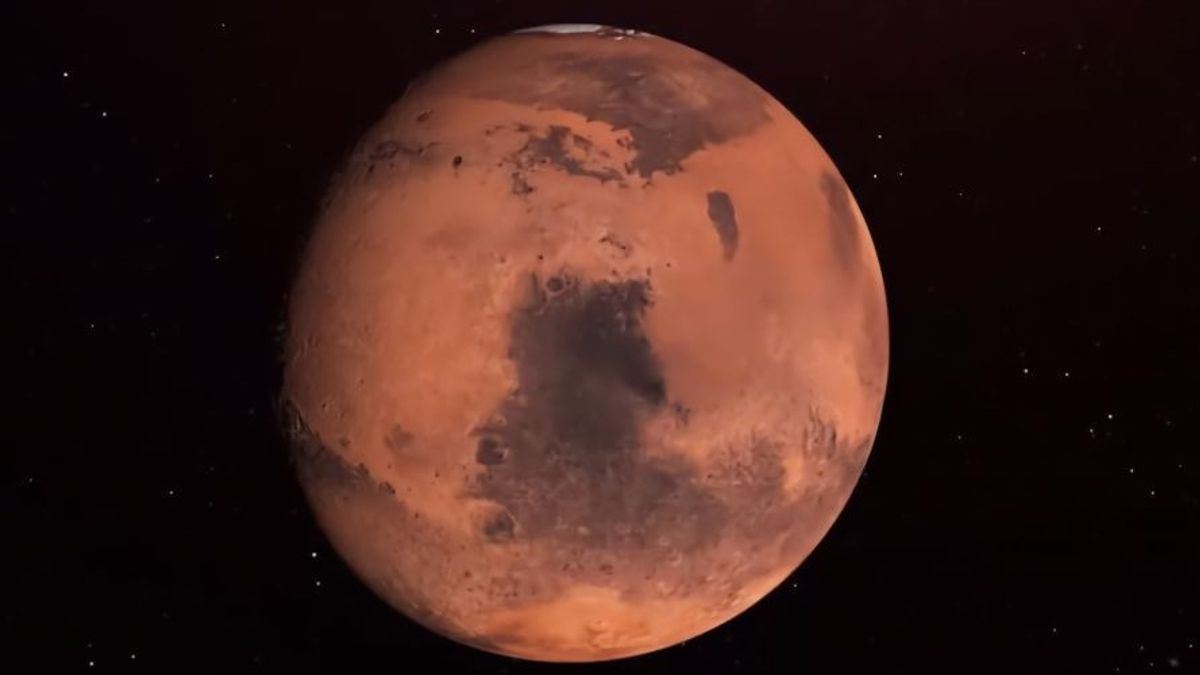JAKARTA - The dry and dusty surface of Mars makes it look very hot. But is the Red Planet really that hot? Mars is one of the objects in outer space that has always been an attraction for Earthlings.
Of all the neighboring planets in the Solar System, why is Mars so often in the spotlight? There are several reasons for this. For starters, its environment is most similar to Earth compared to Saturn, Jupiter, etc.
Mars has a solid surface, (very thin) atmosphere, and is one of the closest planets to Earth. Mars also has a rich and fascinating history. Evidence shows that this planet once flowed abundant water. That means there may have been ancient life on Mars, and this is something scientists have been trying to prove for years.
A deep fascination with Mars has led many to dream of a day when future humans could live on this planet. While the theory is interesting, there are many challenges that come with the idea of human colonization. One of the largest is the surface temperature of Mars.
Despite its red hot appearance, Mars is actually very cold. According to the National Weather Service, Mars has an average surface temperature of around -81°F or -62' C. This can drop to -220°F or –140'C or in winter, and up to about 70°F or 21' C at lower Martian latitudes during the summer. It was clearly much colder than Earth, and not a completely hospitable environment for the humans who lived there.
There are several reasons why Mars is so cold. First and foremost, Mars is farther from the Sun than Earth. More precisely 50 million miles further. Where Earth is at a perfect 91.863 million miles from the Sun, Mars is 148.49 million miles. That greater distance means Mars gets less heat and light than Earth.
For the little heat/light that Mars receives, its weak atmosphere doesn't hold it in well. When heat from the Sun travels to Earth, it is captured in the dense atmosphere of our planet and cannot escape. This is something commonly known as the 'greenhouse effect', and it is one of the main reasons why life exists on Earth.
Mars' atmosphere is about 100 times thinner than Earth's. The planet still receives some of its heat from the Sun, but that heat quickly dissipates and doesn't keep the planet warm at all. As NASA explains, "If you stood at the Martian equator during the day, it would feel like summer on your feet, but winter on your head."
If there's time to use the adage 'don't judge a book by its cover', then this is one of them. Considering that the surface of Mars looks very similar to the hot, dry deserts on Earth, it's easy to assume that it has the same hot temperatures. However, that couldn't be further from the truth. Along with a lack of oxygen and no running water, dangerously cold temperatures are another threat threatening the Red Planet.
The English, Chinese, Japanese, Arabic, and French versions are automatically generated by the AI. So there may still be inaccuracies in translating, please always see Indonesian as our main language. (system supported by DigitalSiber.id)








